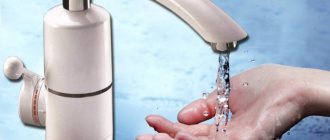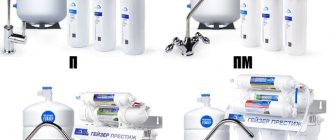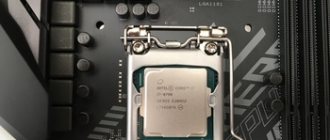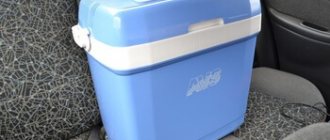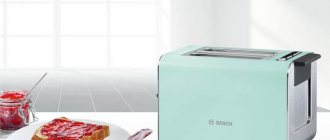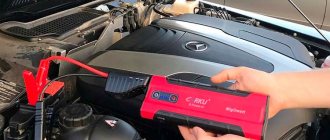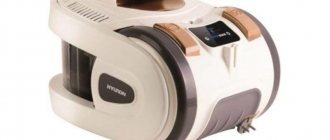We have all known for a long time that drinking water from the tap or from a well is a risky undertaking. And even not drinking, just using such water for technical needs can be dangerous - it can damage a gas boiler, plumbing, or shower.
In country life, high-quality water purification is of utmost importance, but there are no universal solutions: the filter must be selected depending on the composition and quality of the water. In this article, together with a specialist, we understand what a filter for a sink should be and how to choose it correctly.
Why do you need water analysis?
Residents of the countryside, as a rule, take water for life from a well or borehole. And if water from different surface sources is more or less similar, then water from two different wells will most likely be radically different. Moreover, water from a well may contain substances that are generally absent from surface sources. Therefore, the approach to its purification should be more serious, and first you need to find out what kind of water you have to deal with.
Roman Podobedov, Candidate of Chemical Sciences
The first thing you need to pay attention to is the total salt content. It can be either very low or sky-high. The norm for drinking water is 250-400 mg/l, the maximum permissible concentration is 1000 mg/l. In a well, this value can be exceeded several times. Three more parameters that require attention: hardness, iron and manganese content. When designing water treatment from a well, it is also necessary to measure the nitrate content; Exceeding the maximum permissible concentration for nitrates is a common problem. There may also be problems with excess fluoride content. In our work, we even encountered wells with arsenic, radon, nickel and other non-specific contaminants.
It is impossible to assess the composition of water visually and using the “pour water into a two-liter plastic bottle, shake and sniff” method - an analysis must be done before installing the filter.
As our expert says, without analysis, only a few of the most obvious problems can be identified. They are collected in a small cheat sheet.
| Problem | Signs |
| Presence of suspended particles. | Cloudy, opalescent water. |
| Rigidity. | Scale quickly forms on the kettle and a film forms on hot drinks. |
| Iron. | The water has a yellow coating and forms smudges on plumbing fixtures |
| Hydrogen sulfide. | Specific smell of rotten eggs. |
Roman Podobedov
The problem is that most particularly toxic substances (nitrates, fluorine, heavy metals) cannot be detected by eye or using improvised means. It is better to do a full water analysis.
Varieties
There are different filters for softening water from a well, which differ:
- service life;
- quality of cleaning;
- tank volume;
- type of cleaning.
Before purchasing this or that filter, you should find out the level of hardness of the liquid that enters the house. Let's look at the main types of purification devices that help soften water.
Ion exchange
Water softening can be done using an ion exchange filter.
Inside such devices there are ion exchange resins through which the liquid passes. At the same time, at the ionic level, the liquid is softened without saturating it with harmful ions. This water purification system is characterized by high performance, and the cartridges are durable.
Often, ion exchange cleaning devices are mounted inside pipelines that have high pressure. These designs can also be used to purify drinking water. The filter purifies only cold water, which is something users should remember. The described water softening installation can be used on main taps with nozzles.
How water purification occurs based on the ion exchange principle:
Polyphosphate
A water softening filter for a cottage can also be polyphosphate. Such installations are similar to flasks filled with crystalline polyphosphate salt. As a result of the flow of liquid through such a salt, its composition becomes saturated with sodium polyphosphates.
Most often, these devices are installed in the water supply system leading to household appliances:
- boilers;
- washing machines;
- dishwashers.
The advantages of such devices are accessibility and efficiency. But the quality of cleaning is not always high, so it is better to install polyphosphate filters on taps where drinking water does not come from.
Membrane
Membrane filters purify water by osmosis. At the same time, the liquid becomes cleaner and softer. The disadvantage of these devices is the elimination of the beneficial properties of water as a result of the decomposition of certain compounds. Membrane softeners are popular among buyers as they turn the filtered liquid into distilled one. Mineralizers help cope with this problem!
A membrane filter for very hard water has an expensive price, but is more demanding in terms of pressure indicators. It is more practical to use it at a pressure of 3 atmospheres. Built-in pre-cleaning (polypropylene with carbon) helps protect the main structural parts from premature breakdowns. Due to this, the service life of the device is significantly extended.
What is the working principle of a membrane water filter:
Magnetic
This is a real main filter for hard water! The active components of this device destroy lime from the liquid, making it softer and more practical to use. At the same time, methods for softening hard water are based on the use of magnets that change the physical characteristics of the liquid. As a result of the activity of such structures, salts do not:
- form scale;
- pressed;
- create crystals.
The average service life of such structures for drinking water purification is 15 years. With careful handling, it is possible to double it.
Magnetic filters do not need to be embedded into the tap for clean water; just install it on the pipe and you can enjoy the excellent quality of the liquid! Such structures do not need to be washed after use, but should be used exclusively on low-temperature water.
Electromagnetic
To eliminate the hardness of water from a well, you can use electromagnetic filters. A special microprocessor is embedded in their plastic case, capable of emitting electromagnetic waves at a certain frequency.
This filter must be connected to the network, since in the absence of electric current the cleaning process does not proceed. The big advantage of such devices is the consumption of a minimal amount of electrical energy. Electromagnetic softeners require periodic replacement of cartridges.
Replacement of cartridges must be carried out in accordance with the provisions of the attached instructions. The described household water softener filters are expensive, so not everyone can afford such a device. However, these devices are even capable of destroying deposited scale, which makes it possible to increase the permeability of water pipelines.
Electromagnetic softeners can be easily combined with other filtering devices!
Features of filters for washing
You can remove unwanted impurities from water at home by placing a three-stage drinking water purification system under the sink and connecting it to the pipe of the house water supply system (or the cold water main). You will need to install a separate faucet for purified water into the sink or countertop. Water, sequentially passing through all three stages of purification, gets rid of mechanical impurities, chlorine and organic and organochlorine impurities, heavy metals, undesirable tastes and unpleasant odors.
There are different options for completing the flow filter, and, depending on them, you can reduce the iron content and water hardness, as well as get rid of bacteria. Self-locking systems have now been developed that do not allow the filter elements to unscrew when the filter is even under strong pressure. Using the instructions, you can install such a filter yourself, in just half an hour.
Many people are bothered by the need to frequently change cartridges, but modern filters are designed in such a way that there are no problems with this - everything is done in one touch. There is no need to use a special key, wash the flasks and perform other tedious rituals.
Roman Podobedov
The easiest way to change cartridges is in three-stage cleaning systems - the operation takes 30 seconds and can be performed with one hand. The main thing is to remember to turn off the water before replacing! The frequency of replacing filter elements depends on the quality of the source water and the volume of its consumption (family size, whether they cook at home, whether they cook with filtered water). Typically, the frequency of replacing cartridges in washable filters is once every 6-12 months. But this can happen more often with high initial water hardness or a large family.
Electromagnetic filter systems
Electromagnetic filters are devices in a plastic case with a built-in microprocessor. It emits electromagnetic waves of a certain frequency. The vibrations are transmitted through special wires, the ends of which are wound onto pipes in front of household appliances, protected from the effects of hard water.
Features of using the filter:
- Under its influence, the already deposited scale disintegrates over time.
- The cleaning device can be installed on a clean pipe made of any material.
- An electromagnetic filter for water of increased hardness is connected to the electrical network. During operation, it consumes a small amount of electricity. But the device does not require cartridge replacement.
Important! Under the influence of the filter, the physical and chemical properties of drinking water do not change, i.e. it contains exactly the same amount of impurities, but they cannot be deposited in the form of scale.
Electromagnetic devices are the most expensive of all, but also the most effective. They can also be used in conjunction with other filters.
USEFUL INFORMATION: How to replace individual hot water meters?
Sorption filters and reverse osmosis: pros and cons
Flow-through filters for sinks are valued primarily for their speed of cleaning - consumers instantly receive clean water.
Roman Podobedov
In-line filters have two different cleaning principles. The first is sorption filters. They contain various sorbents (charcoal, ion exchange resin) that adsorb contaminants on their surface. The second type is reverse osmosis filters with a membrane whose pores allow only water molecules to pass through. On this membrane, the water flow is divided into two parts: 20-25% goes to the clean water tap, the rest goes to the drainage.
Which system is better? They both have strengths and weaknesses.
Roman Podobedov
The strength of reverse osmosis is that it can purify water of virtually any initial composition to the state of H2O. There are no alternatives to reverse osmosis if your water has very high iron levels (above 1.5 mg/l), nitrates or fluorides, risk of radioactivity or microbiological contamination, including viruses.
At the same time, according to the expert, this design also has a number of disadvantages:
- Water after reverse osmosis filters is absolutely “empty”; it does not contain not only harmful, but also useful substances. Drinking such water without additional mineralization for a long time is unsafe for health;
- Water consumption increases fourfold, since only one part of the water goes into the tap, and 3-4 parts into the drainage.
- To “push” water through the membrane, a pressure of at least three atmospheres is required. If there is no such pressure in the pipes, a pump and an electrical supply are necessary;
- Such systems are more expensive.
Unlike reverse osmosis filters, sorption filters are capable of purifying water only from those contaminants for which they contain a sorbent.
Roman Podobedov
This list includes all the contaminants characteristic of tap water: chlorine and its compounds, iron and heavy metals, odor, color, suspended solids, hardness up to 6 mEq/l. At the same time, such filters are cheaper and less sensitive to inlet water pressure and leave macronutrients that are necessary and beneficial for the body in the water.
Choosing a device to combat stiffness
The appearance of scale is a standard situation when using hard water supplied through the water supply. It contains free ions of alkaline earth metals, mainly calcium and magnesium. When heated or kept in a container for a long time, they bind to carbonate and sulfate acid residues.
Water softening devices are installed in the water pipes of both city apartments and suburban private property. They are selected taking into account the tasks to be solved
The result settles on the walls of the devices in the form of a solid coating. This rock-like formation clogs the pipes. Hardly soluble lime deposits affect household appliances connected to the water supply network.
Scale contributes to the failure of heating elements in dishwashers and washing machines. Motors and pumps of household appliances operating in emergency mode due to a significant increase in load break down. The thermal conductivity of water heaters of all types is significantly reduced.
Due to the narrowing of the working clearance of water pipes, the load on the motors and pumps of washing machines and dishwashers increases tenfold. As a result, the resource of equipment is reduced
Unfortunately, it is absolutely impossible to determine the hardness of water by eye. The presence of rust in it is not an indicator, because... All types of iron do not take part at all in the formation of hard deposits on pipes. Hard water can be crystal clear, have no odor, and you can only tell that it is hard by looking at the build-up in the kettle.
City apartment owners are accustomed to relying on Vodokanal, which is obliged to purify the water supplied to them. However, not all measures taken by this organization are quite effective. In addition, for the drinking category, magnesium and calcium are still needed, and therefore they are not eliminated “to zero.”
How can we rid water supplies of hardness? Naturally, by installing filters. You just need to know which device to choose, and also understand why you need it.
The settled scale significantly reduces thermal conductivity, which is why household appliances are forced to work in emergency mode. Therefore, energy consumption increases, and equipment breaks down faster
It is clear that for the treatment of technical and drinking water categories, different systems are needed, the features of which we will also understand at the same time.
Features of calcium and magnesium capture
All currently existing water purification processes are divided into physical (mechanical) and chemical methods. Coarse, fine and ultra-fine (membrane) cleaning is carried out mechanically, which consists of simple filtration. The only difference is the pore size of the filter material.
But filters cannot collect and retain polluting chemical suspensions dissolved in water. They do not capture cations with anions and do not even retain molecules. Here filters with a different mechanism are used - chemical.
The consumer is now widely presented with mainline filters, the cartridges of which are impregnated with ion-exchange resin. Such devices are capable of performing both mechanical filtration and chemical cleaning.
The working element in chemical filters for water purification is an ion exchange resin, which is used:
- In the form of granules. Transparent balls filling flasks embedded in the water supply.
- In the format of impregnation of polymer fibers. They are loaded in the form of a cartridge impregnated with ion-exchange resin into similar flasks.
According to manufacturers of tap water softeners, fiber filters are much more effective. Especially if they are hollow fiber, because... they have a larger contact area with the processed medium. This means that the speed of water treatment is higher.
The function of the ion exchange resin is to extract free alkaline earth metal cations and form salts with them that do not form a solid precipitate
The mechanism of action of the ion exchange resin is simple. The free sodium and potassium cations contained in it “precipitate” the anions of acidic residues, forming safe salts with it. This prevents the formation of limescale deposits, and new chemical formations are simply washed down the drain.
Options and scope of application of devices
Softening devices are used separately or included in drinking water treatment systems. It all depends on the tasks being solved. They also determine the criteria for choosing a device.
Main-line water softening devices prepare water for industrial purposes. Their task is to maximize the extraction of Ca and Mg ions from the treated water
Depending on the work to be done, softeners are installed:
- At the water supply inlet to the house/apartment. These are filters for general cleaning purposes. Most often, they contain two or three filters, one of which is filled with a cartridge with impregnation or ion-exchange granules.
- Under the sink. They have the same principle as in the previous version, but they are placed in front of the drinking water tap. This group includes both three- and four-level purification systems, as well as reverse osmosis installations.
- Into the water supply in front of the equipment. Compact main devices mounted in water pipes. Most often this is a module with a polymer fiber cartridge impregnated with ion exchange or similar backfill.
It is clear that the degree of purification varies among the listed options. Surprisingly, hardness is eliminated more thoroughly with technical category water filters than with drinking water treatment systems. On the contrary, the calcium extracted from the water is restored by the mineralizer of the reverse osmosis system - after all, the body needs it.
Water treatment for drinking and technical purposes differs in the degree of mineralization of the result. In reverse osmosis systems, the deficiency of calcium and magnesium is restored by the fifth flask - mineralizer
Guidelines for an informed purchase
In order to buy exactly the right filter softener for water treatment in a private house or city apartment, in addition to its purpose, you should consider the following aspects:
- Material safety. Before purchasing, please read the technical documentation of the product. It is highly desirable that it have safety certificates of both domestic and international levels.
- Strength. Of course, the device embedded in the water supply must resist possible hydraulic and mechanical shocks.
- Temperature Range. It should be remembered that hot water filters can be installed in cold water supply branches. On the contrary, it is absolutely impossible.
- Filtration speed. It's an individual matter. Depends on the volume of consumed technical or drinking water.
- Connection size. It’s great if adapters are not required to install a water softening device. But if necessary, you can use this option.
If you take into account the above criteria, your choice will be balanced, and the purchase will not be a waste.
Is it possible to do without a filter?
Some people generally doubt the advisability of installing a filter: since the water from your own well is not suitable for drinking or cooking, it is better to take it in stores, from a spring, or bring it from friends. It will be more reliable and cheaper.
Kasap IvanForumHouse Member
Cheap filters will not clean the salts, but expensive ones will ruin them, and it’s not a fact that they will clean them properly. And their cleaning efficiency drops every day until the next cartridge replacement or addition of cleaning ingredients.
But, as our expert says, there is no need to completely remove salts from water; our body needs them. You need to remove harmful and toxic substances, and the filter copes with this task perfectly if:
- choose it correctly;
- change cartridges regularly (the cost of the kit will in any case be 100% lower than the cost of the corresponding volume of bottled water).
All well problems apply to springs; they may contain various non-specific contaminants that cannot be detected with the naked eye.
Roman Podobedov
If you regularly go to a spring, we recommend that you first take the analysis from it to the laboratory and check it for at least 15 parameters. The most important thing: microbiology and organics, hardness, iron, manganese, nitrates, fluorides. In our experience, the maximum permissible concentration for nitrates is exceeded in more than 60% of springs, and in regions with active agricultural activity - in 100%.
How to choose filters taking into account the characteristics of water
When choosing a flow filter for your water, you need to clearly define what problem it should solve, and then be guided by the name or description of the filter.
Roman Podobedov
There is a filter that fights unpleasant odors and improves the color and smell of water. If you have problems with scale, there are also appropriate filters; there are designs that are used if “rusty water” has a metallic taste. If the source water is not chlorinated, it is recommended to use systems that contain a module with a special ultrafiltration membrane that provides protection against bacteria.
When choosing a filter, you need to focus on its ability to make your water drinkable, solve existing problems and not fall for the tricks of marketers.
110402FORUMHOUSE Member
How beautifully their manufacturers write about filters, it’s simply a masterpiece! As a complete sucker in this area, it’s hard for me to navigate.
Here are some things you should be wary of in filter descriptions:
Roman Podobedov
Among the tricks of marketers, I would include “perpetual motion machines” - filters that work for years without maintenance and at the same time clean “everything”; all kinds of water structurers (this has not been scientifically proven); water purification using magnetic fields, devices that make “living” and “dead” water - terms that are not fully defined by experts.
In addition, our expert advises buying filters from well-known brands in large chain stores: trusted manufacturers value their reputation and will not attribute properties to filters that they do not possess. And large chains carry out a fairly strict selection and testing of both manufacturers and their products before putting the filter on the shelf.
Roman Podobedov
And when purchasing, it is important to carefully review the information on the packaging and in the passport; the operating parameters of a given filter device are usually clearly indicated there.

